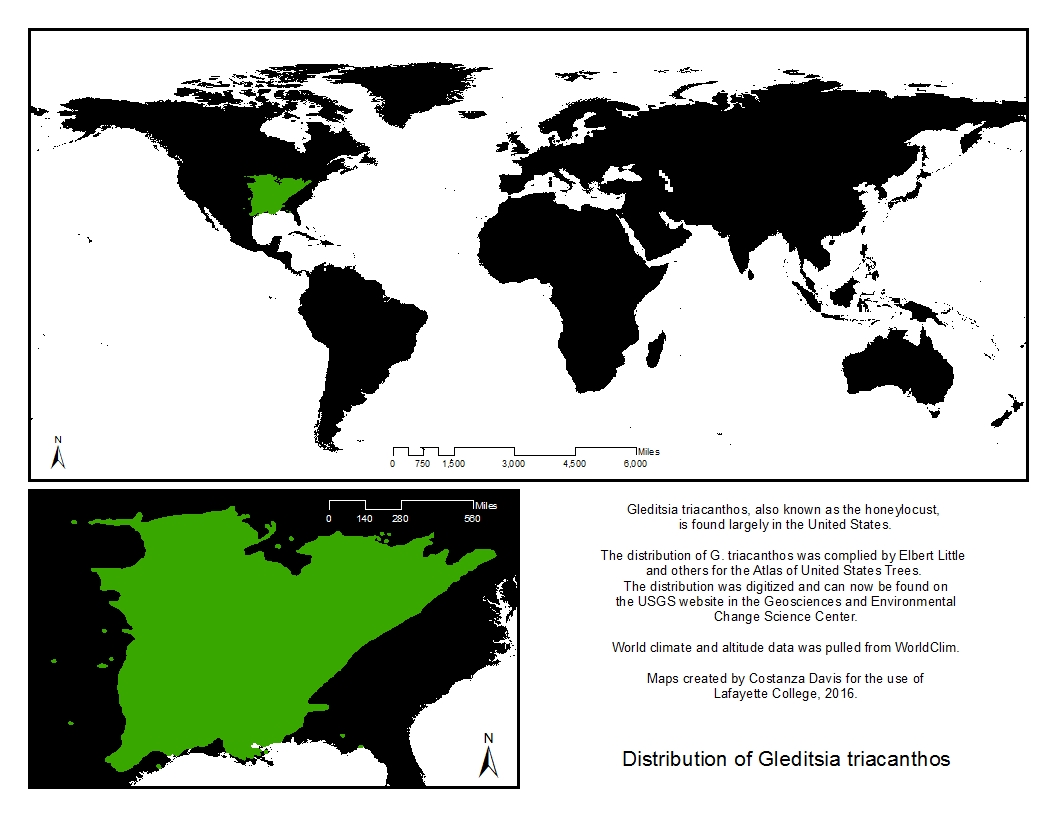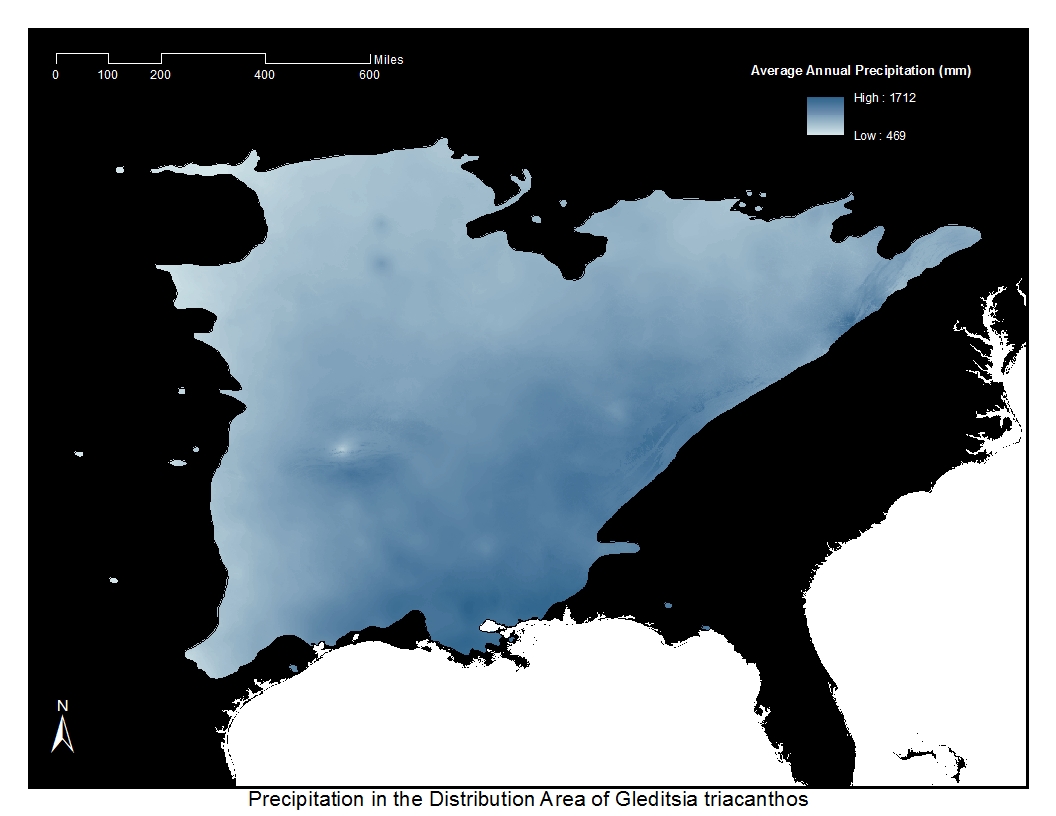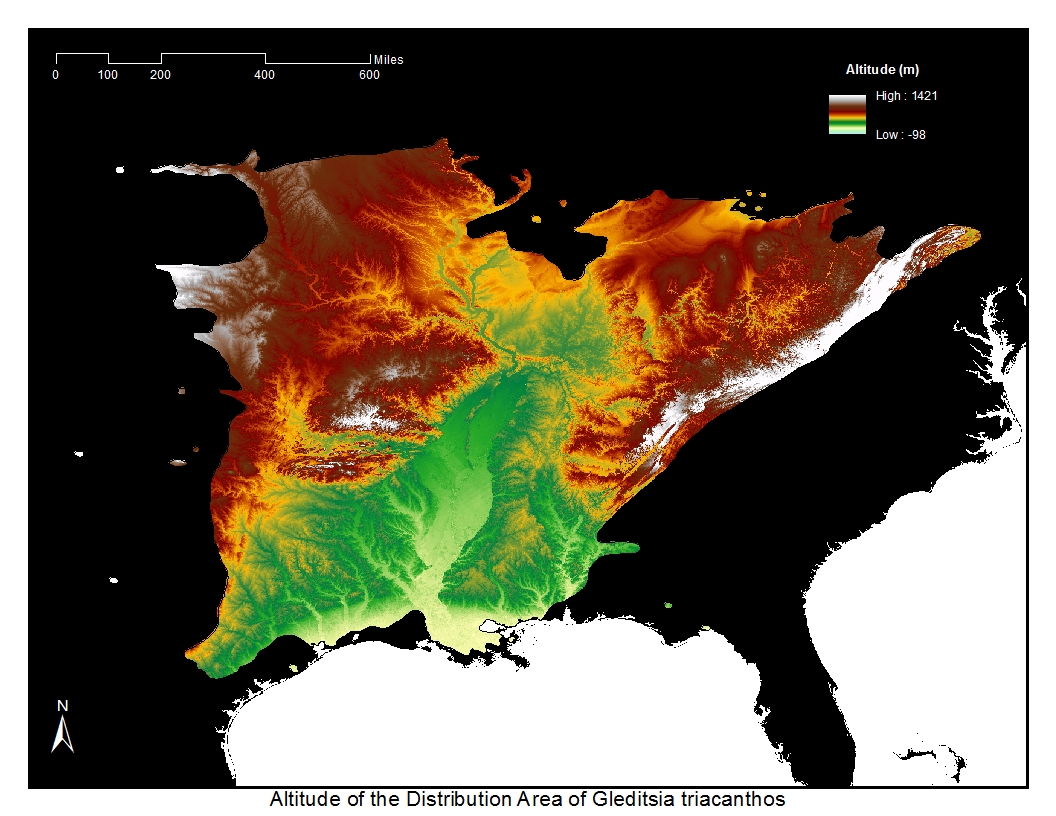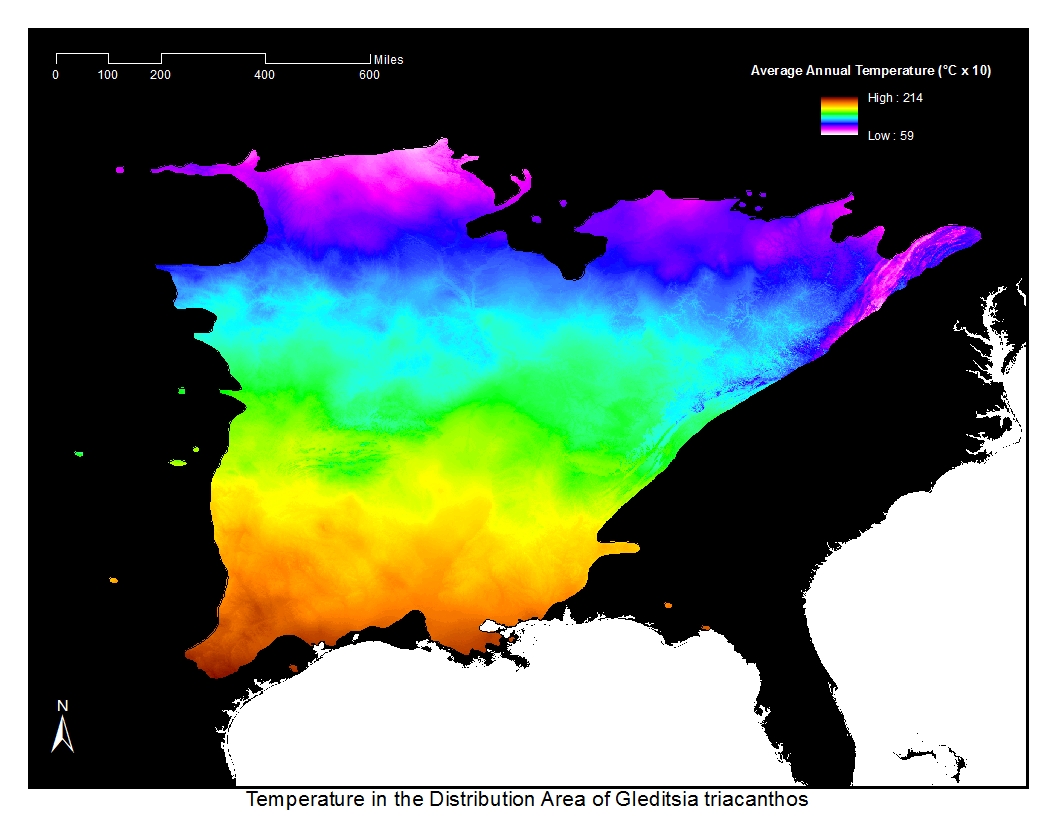Honeylocust, Gleditsia triacanthos, is typically also known as sweet locust and thorny locust. The variety found at Lafayette is Gleditsia triacanthos var. inermis ‘Shademaster’. The var. inermis makes it thornless, so it can also be referred to as the thornless honeylocust. The ‘Shademaster’ cultivar is a cultivar for this variety, and the resulting common name is the shademaster honeylocust.
A key for honeylocust cultivation is a temperate climate. Its native range boasts subhumid to humid climates, and growing seasons reach from 150 to over 300 days. Typically, the honeylocust is tolerant of low temperatures. However, some varieties are less tolerant of others, so they may be damaged by frost.
The honeylocust does best on limestone soils or on floodplains and prefers moist soils. However, it is still very resistant to drought. It is also very tolerant of alkali and acidic soils, even if the prime pH range is typically between 6 and 8. Best growth is also below 2,500 feet in elevation. Above 5,000 feet, growth is still possible, but trees only average 8 feet in height. Without this elevation issue, honeylocusts typically grow to 70 or 80 feet with a 24 to 36 inch diameter trunk. The largest trees reach beyond 140 feet in height with 60 to 72 inches in trunk diameter.
Flowering occurs between May and June, when the leaves are already out. As honeylocust is polygamodioecious, it has bisexual and male flowers on some trees and bisexual and female flowers on others. Flowers tend to be white to a light greenish yellow and grow in clusters, on drooping columns. Honeylocusts produce seeds starting at 10 years of age, with maximum production between 25 and 75 years of age, continuing until age 100. Seed pods ripen between September and October. The pods are 6 to 16 inches long and flat.
Root cuttings are potentially the best method for propagation, though cuttings of other portions of the plant are typically successful.
Honeylocust is shade intolerant at all ages. While there are an increasing number of insect pests, most are not fatal. Likewise, several diseases affect honeylocust, but none tend to cause devastating injury to the tree. It is resistant to salt spray, wind, and flooding, but is susceptible to fire damage and air pollution damage.
The widest dissemination of seeds is caused by cattle and other animals feeding and then dispersal through feces. In fact, digestion is thought to be very helpful to the germination of seeds. The fruits and beans are eaten by cattle, hogs, squirrels, deer, birds, and opossums. Additionally, honeylocusts are often used for erosion control and have been used to replace American elms that have been killed by Dutch elm disease.




